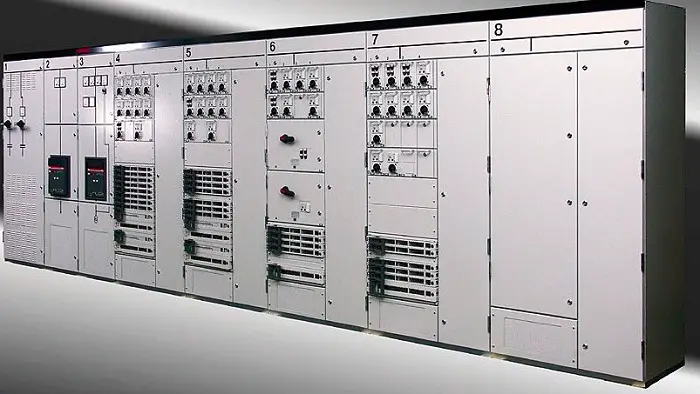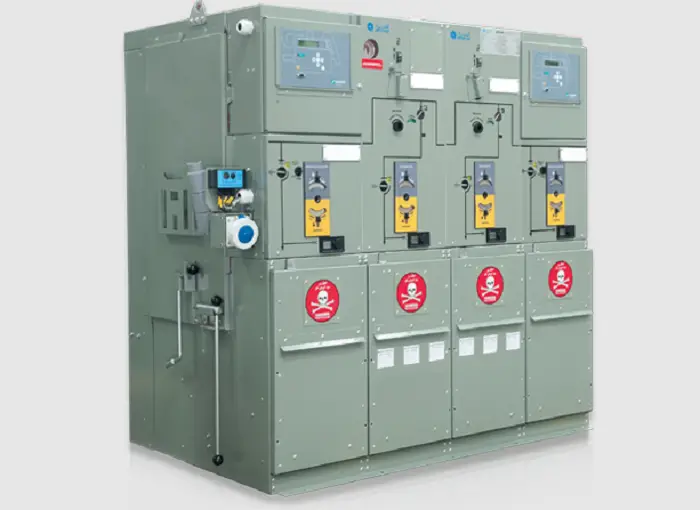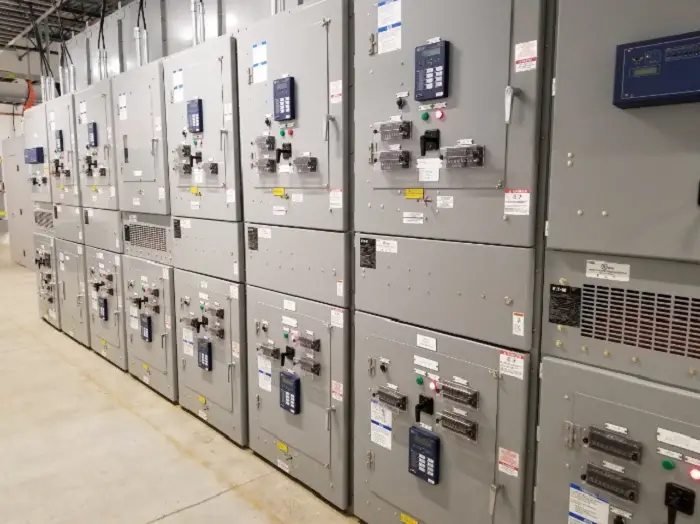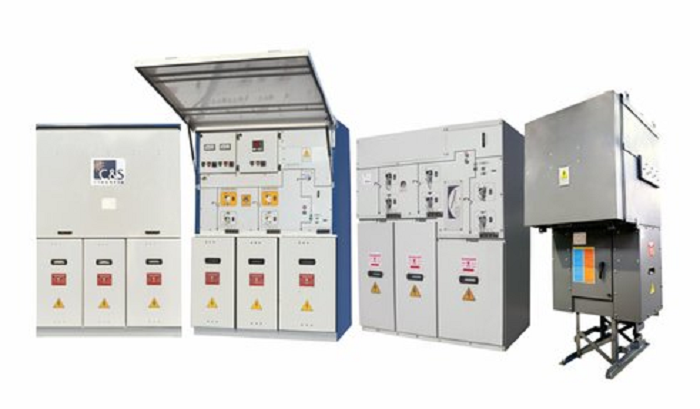Comprehensive power networks in industries and commercial establishments need enclosures to give a streamlined structure to an otherwise complex web of connections. Enclosures facilitate seamless control, power regulation, and protection to all the connected equipment. Moreover, high-quality units detect and alleviate risks like equipment failure and fire from short circuits without human intervention.
Ring Main Units and Switchgears are two of the most widely used cabinets. They offer control. Additionally, they provide adequate protection from specific voltages at domestic and industrial levels. In this article, we try to give you a detailed view of Switchgear and Ring Main Units. This will help you choose the right option for your establishment. For similar articles, click here.
In this article, we will look at Ring Main Units Vs Switchgears and understand which is better.
See Also: 8 Best Self Monitored Home Security System of 2023
Table of Contents
Ring Main Units (RMU): Explained
RMU is defined as a medium voltage, fully isolated, and gas-insulated cabinet that is leveraged to quantify, connect, and integrate protection functions of a transformer with a fixed type breaker. Medium or low voltage power distribution utilizes RMUs. These are a type of Switchgear. But unlike generic switchgear systems, these are compact, sealed, and enclosed. Therefore these are complete switchgear systems.
A Ring Main Unit is an entire assembly of switching devices. Like traditional switchgear systems, these also consist of metering and protection devices. A typical RMU has one incoming feeder and multiple outgoing feeders. The incoming feeder is either an SF6 circuit breaker or a vacuum circuit-breaker with associated earth and disconnect switches. They are available for various voltage ranges and suitable for indoor and outdoor applications.
Ring Main Units are reliable, safe, easy to replace and charge meagre maintenance costs. RMUs protect the whole electrical circuit from issues like ground-fault current, overloads, and short-circuits. It provides effective control of the entire electrical system through switches. It also helps isolate any faulty equipment from the rest of the circuit.
What Are Switchgears?
Switchgear is an electrical apparatus. Switching, controlling, regulating, and protecting electrical circuits efficiently are all done by Swiitchgears efficiently. In an electrical network, Switchgear comprises electrical disconnect switches and fuses used to manage, protect and isolate the electrical devices connected to the network. They include various electrical devices like off-loading isolators, circuit breakers, contactors, and fuses. The most basic function of Switchgears is to protect the electrical appliances on the network.
They do so mainly by interrupting short-circuiting and overload fault currents while maintaining the service to unaffected circuits. Switchgears enhance the system’s availability. This is because they allow more than one source to feed a load. They are essential components in industries. This is because the environment is genuinely prone to electrical faults. Switchgear systems require regular maintenance and servicing to remain safe for usage and fully optimized to provide such high voltages.
The invention of Switchgears dates back to the origin of electricity generation itself. Typically, a Switchgear is located on both sides of large power transformers in substations. Today, vacuum, air-blast, or SF6 equipment has hugely replaced oil-filled switchgear equipment. Automated equipment controls these large current and power levels safely.
Ring Main Units Vs Switchgears: Comprehending The Differences
Ring Main Unit is a medium voltage and compact Switchgear that includes two or more isolating switches. These isolating switches work based on the load and consist of circuit breakers with proficient fault-sensing relays. Ring Main Units’ compact nature and working mechanism make it ideal for ring distribution systems. Additionally, in RMUs, the substation is still supplied from one end even upon the failure of the other end. This is because supply to the substation is from two different locations.
Ring Main Units are an innovative development that has made it exceptionally easy for operators to scale the various power distribution challenges. As reliable equipment, Ring Main Units require very little maintenance and can easily withstand harsh environmental conditions. They offer good protection against phase-to-phase fault currents, ground contact currents, and magnetizing overload currents. RMUs can be seamlessly integrated with distribution management systems and facilitate an intelligent grid solution with innovative communication capabilities and electronic components.
Switchgears, conversely, is the generic term used to define a component in an electric power system used to control, isolate, and protect all connected equipment. Traditional switchgear systems are obsolete. They provide no digital compatibility and functionality, making them non-ideal for smart grid solutions. There is a crucial advantage to switchgear systems for outdoor and industrial applications. Engineers use a switchgear system to switch very high-voltage circuits in and out. RMUs use low voltage substations, up to 11kV. This is, therefore, the complete answer of Ring Main Units Vs. Switchgears.
Different Parameters For Basic Electronic Components
Here are the different parameters for basic electronic components.
Below Is A Table Showing the Different Parameters Of Various Electrical Components
| Parameters | Resistors | LEDs | Wiring | Board Connectors | Earthing |
|---|---|---|---|---|---|
| Function | Limits the flow of current | Emits light | Transfers electrical signals | Connects different components | It provides a low-resistance path to the ground |
| Type | Fixed or variable | Surface mount or through-hole | Single or multi-conductor | Header, socket, or plug | Earth rod, wire, or plate |
| Material | Carbon, metal film, or wire wound | Semiconductor or organic compound | Copper or aluminium | Brass, tin, or gold-plated | Copper or aluminium |
| Tolerance | Specifies the allowable deviation from the nominal resistance | Specifies the allowable deviation from the nominal brightness | N/A | N/A | N/A |
| Power rating | Specifies the maximum power the resistor can dissipate | N/A | N/A | N/A | N/A |
| Colour coding | Used to indicate the resistance value and tolerance | N/A | N/A | N/A | N/A |
| Voltage rating | N/A | Specifies the maximum voltage the LED can withstand | N/A | N/A | N/A |
| Forward voltage | N/A | Specifies the voltage required to turn on the LED | N/A | N/A | N/A |
| Current rating | N/A | Specifies the maximum current the LED can handle | N/A | N/A | N/A |
| Series/parallel connection | connects in series or parallel to obtain the desired resistance value | connects in series or parallel to obtain the desired brightness or colour | connects in series or parallel to transfer electrical signals over long distances | connects in series or parallel to connect different components | N/A |
| Grounding | N/A | N/A | N/A | N/A | Used to provide a low-resistance path to the ground and prevent electric shock |
| Applications | Used in circuits to control current flow and voltage | Used in electronic displays, lighting, and indicators | Used to transfer signals between different components | Used to connect different components on a circuit board | Used to provide safety and prevent electric shock |
FAQs
What are the basic electronic components?
The basic electronic components list has resistors, capacitors, diodes, transistors, and inductors. These electronic components are used to create circuits that can perform various functions like regulating current flow and providing safety against overcurrent.
What is the function of a resistor?
A resistor is a passive part of a circuit that restricts current flow. It regulates the current flow through a circuit and safeguards against overcurrent damage to other components.
What is the function of a capacitor?
A capacitor is a passive type of electronic component that stores electrical energy. It filters out unwanted frequencies in a circuit, stabilizes voltage levels, and stores energy for short-term use.
What is the function of a diode?
A diode is an active circuit type of electronic component that only permits current to flow in one direction. In addition to protecting circuits against reverse current flow and regulating voltage levels, it is used to rectify AC power into DC power.
What is the function of a transistor?
Electronic signals are amplified and switched by transistors, which are basic circuit components. Among other electronic devices, amplifiers, switches, and power regulators employ it.
What is the function of an inductor?
A passive type of electronic component called an inductor uses a magnetic field to store energy. Circuits employ it to stabilize voltage levels, filter out high-frequency noise, and store energy for immediate use. Analog circuits, filters, and power supplies frequently use inductors.
Conclusion
In conclusion of Ring Main Units Vs Switchgears, switchgear only has metering, incoming, and outgoing compartments. In contrast, RMU has various compartments, including the power incoming from a substation, metering compartment, and consumer outgoing. Even though a Ring Main Unit might be comparatively more expensive equipment than Switchgear, it can help your establishment to accelerate your grid digitization.
The advent of smart RMUs has revolutionized the modern grid in the new electric world. It is safe, simple to install, and has low-maintenance equipment that does all the work a generic switchgear system can do. This makes RMUs an all-in-one solution for an electrical system.
Thus, we can conclude that RMUs are the better choice. Hence, we recommend you contact a renowned partner who can provide the right solution for your establishment. The best brands will support your establishment in bringing innovation to every level of your grid. It will enhance safety, reliability, efficiency, and overall connectivity.



